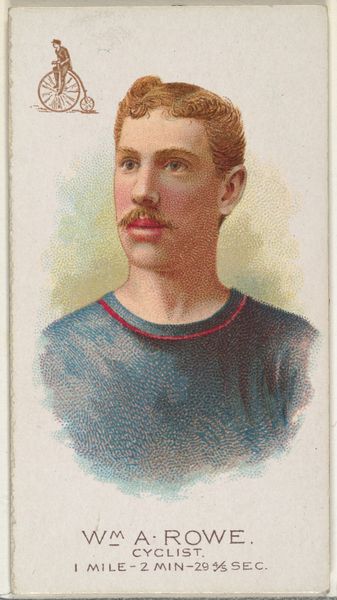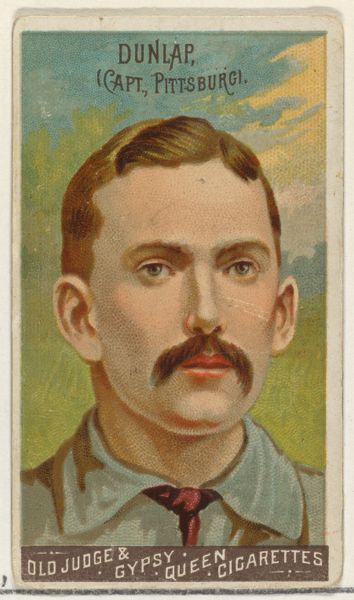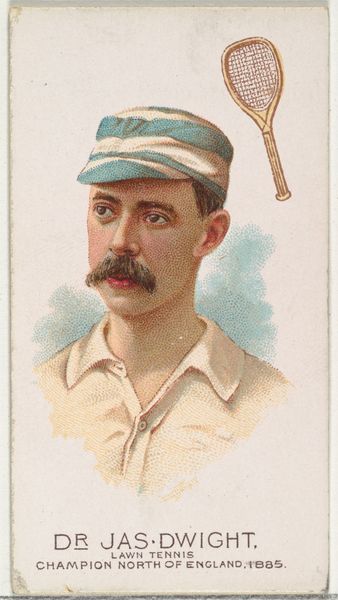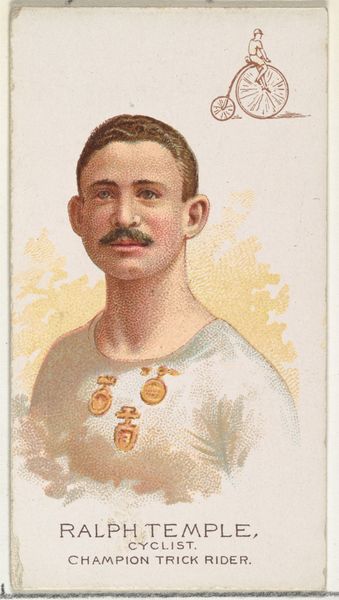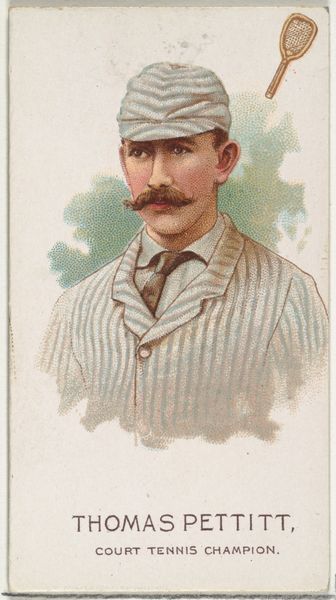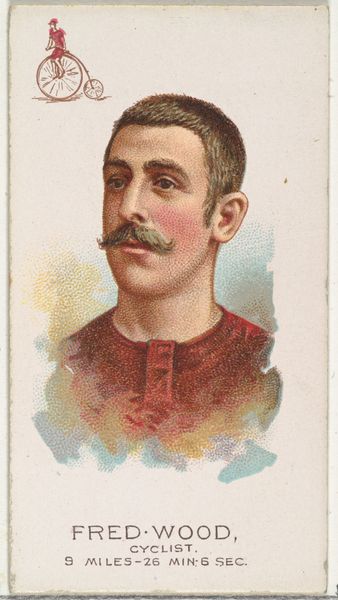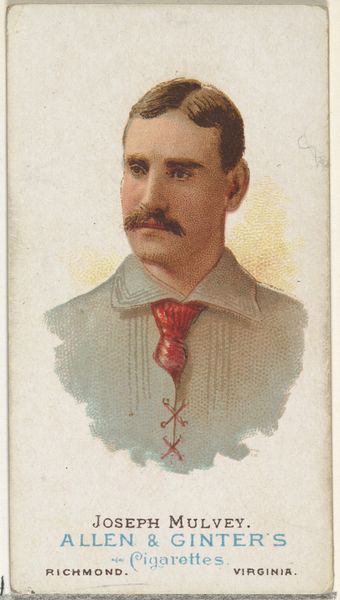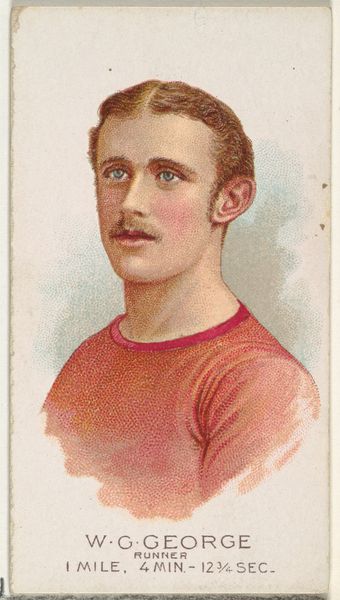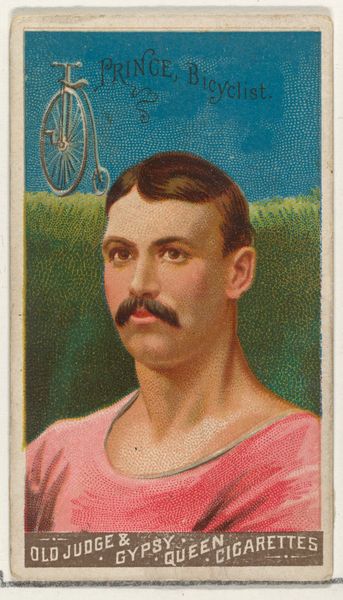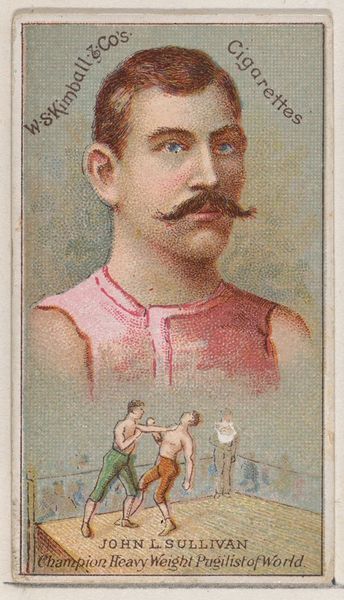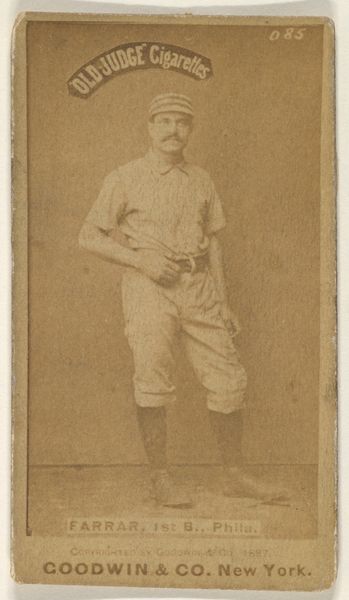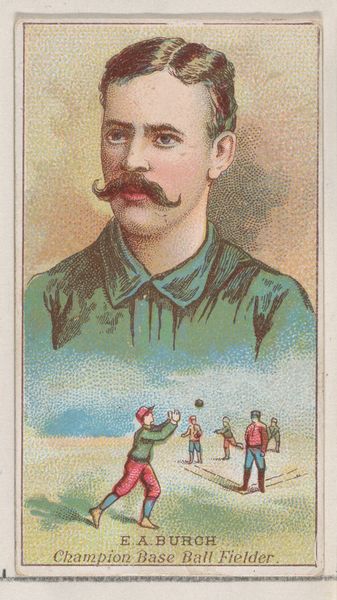
Patrick Fitzgerald, Pedestrian-Go As You Please, from World's Champions, Series 2 (N29) for Allen & Ginter Cigarettes 1888
0:00
0:00
drawing, print
#
portrait
#
drawing
# print
#
impressionism
#
caricature
#
figuration
Dimensions: Sheet: 2 3/4 x 1 1/2 in. (7 x 3.8 cm)
Copyright: Public Domain
Curator: So, what’s your first reaction to this piece? It’s an 1888 print called "Patrick Fitzgerald, Pedestrian-Go As You Please, from World's Champions, Series 2 (N29) for Allen & Ginter Cigarettes." Editor: Immediately, I see a caricature with slightly exaggerated features, especially the redness in the cheeks. There's a sweetness about the piece despite that. What strikes you as you analyze it through a historical lens? Curator: This lithograph comes from a time of intense industrialization. These cards, which came with cigarette packs, were really promotional tools capitalizing on celebrity culture. Here we have a portrait of Patrick Fitzgerald, a champion pedestrian known for covering 610 miles in six days. Editor: The idea of "go as you please" also suggests a particular ideology about the individual and mobility, and perhaps even freedom that's both enticing and slightly performative. What about that phrase in the context of the late 19th century? Curator: The phrase, along with Fitzgerald's achievement, taps into the anxieties and ambitions surrounding speed and progress. Railroads were booming, industries demanded faster production, and suddenly this champion walker, setting his own pace, embodied a spirit both competitive and individualistic. These cards fueled aspirations while distracting from labor struggles. Editor: It seems like a carefully constructed narrative intended to appeal to the everyman, linking his product, cigarettes, with masculine achievements of stamina and freedom, regardless of social inequalities. The romantic background coloring enhances a particular narrative about masculinity and ambition, doesn’t it? Curator: I agree. We're looking at not just an image but a carefully packaged concept. These small artworks become potent cultural artifacts when considering circulation, readership, and intention. It's like, buy a smoke, buy a dream of athletic prowess, even buy the promise of liberty! Editor: Precisely! Thanks to artworks like this one, we see into a period when ideas about capitalism, aspiration, and self-expression were taking shape through advertising. I look at it and it seems like every element is connected with an implicit value, it gives food for thought, truly. Curator: Yes! I was really taken by how it connects to the tensions in our time, too, particularly around commercial narratives of wellness and competition.
Comments
No comments
Be the first to comment and join the conversation on the ultimate creative platform.
